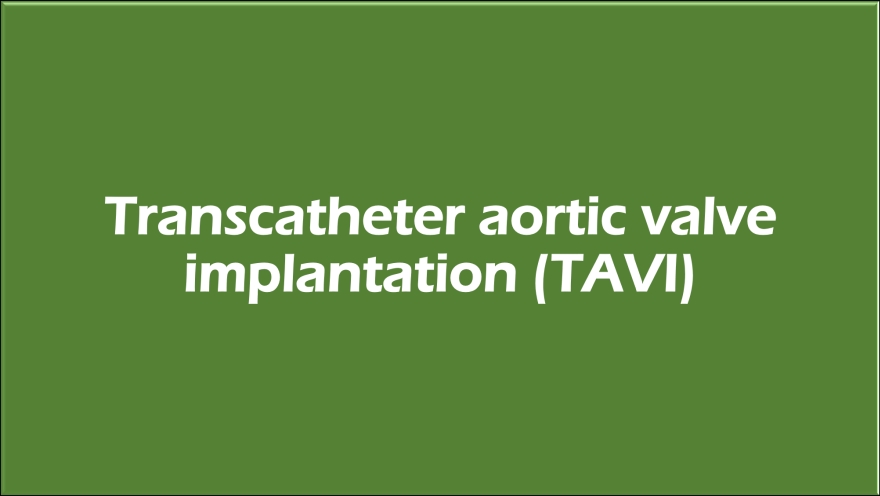Transcatheter aortic valve implantation (TAVI)
Transcatheter aortic valve implantation (TAVI)

Conventionally, aortic stenosis is treated surgically. Transcatheter aortic valve implantation (TAVI) represents a minimally invasive alternative to conventional surgery. There two routes for TAVI – trans apical and trans femoral. TAVI is also an option for the treatment of the failing surgical aortic bioprosthetic valve, instead of the redo surgery which carries a higher risk than the initial surgery. Though the risk of redo surgery may be only two to seven percent in elective cases, the risk may increase up to thirty percent in non elective high risk cases. In this situation, it is a transcatheter aortic valve -in-surgical aortic valve implantation. TAVI is also known as transcatheter aortic valve replacement (TAVR).
Piazza N and associates evaluated the results of twenty patients who had undergone transcatheter aortic valve -in-surgical aortic valve implantation for a failing bioprosthetic valve [1]. Fourteen had stented and six stentless surgical prosthesis. Twelve cases were performed by the trans apical route route and eight cases by the transfemoral route. Implantation was successful in eighteen cases. A mean transvalvular gradient of 20 mm Hg was achieved and there was mild to moderate paravalvular aortic regurgitation in only two patients. There was one intra procedural death following pre implant balloon aortic valvotomy and two further in hospital deaths due to myocardial infarction. Authors conclude that TAVI in a failing aortic bioprosthesis is a safe and feasible treatment for high risk cases.
Reference
- Piazza N, Bleiziffer S, Brockmann G, Hendrick R, Deutsch MA, Opitz A, Mazzitelli D, Tassani-Prell P, Schreiber C, Lange R. Transcatheter Aortic Valve Implantation for Failing Surgical Aortic Bioprosthetic Valve. JACC Cardiovasc Interv. 2011 Jul;4(7):733-42.

